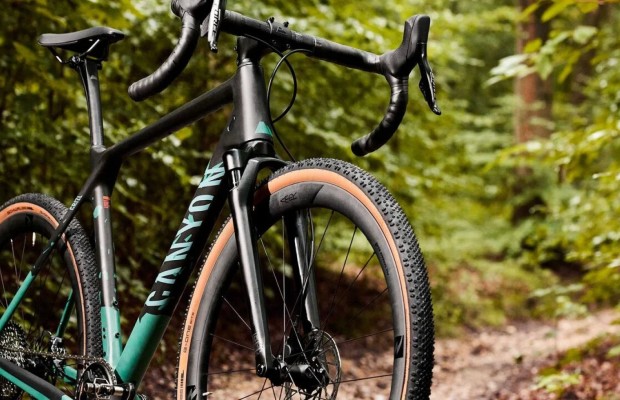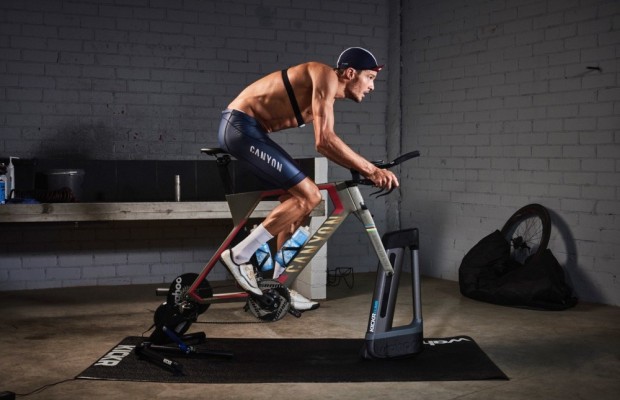Electronic suspensions are set to invade mountain biking
Although it is not the first electronic suspension system that we see in the XCO World Cup, the still prototype RockShox Flight Attendant has been the one that has reached more mountain bikes on the grid. So much so that at the Les Gets race, the top three (Koretzky, Dascalu and Schurter) were riding it on their bikes. It looks ready for release and could make a big change to the fleet of mountain bikes we see on the street.

Electronic suspensions win at the Les Gets XCO World Cup and appear ready for market release
Fox was ahead of everyone with its electronic and intelligent Live Valve system, but for some reason, perhaps weight, it did not catch on among the riders of their official teams and few models included it as a mounting option in their sales catalogs. Then came the turn of SR Suntour, from whom we could see almost live and on Tom Pidock's bike how he developed the SR Suntour TACT electronic system that went on sale a few months ago for 4,990€ and which is often mounted on Pauline Ferrand-Prevot's and Tom Pidcock's Pinarello Dogma XC.

But the real electronic invasion has come to the XCO World Cup a few weeks ago and from the hand of RockShox with its new Flight Attendant. A system that the brand introduced a couple of years ago for gravity modalities, here you can read our test with it, but now it has adapted to its lighter forks and shock absorbers, the SID range intended for XC.

RECOMENDADO

Black Friday 2025 cycling bargains: save on Garmin, POC, Maxxis and more

Black Friday Garmin 2025: the ultimate guide to choosing your GPS at the best price

Do you need suspension on your gravel bike?

A real workout saver of only 56 min on the turbo trainer

Which profile wheels to choose according to the area where you live: mountain, flat or coast

Will the single chainring prevail on the road? This is the state of technology today
The first to use it in competition was Nino Schurter, the star rider of SRAM and RockShox, and in a few weeks many official teams are already using it. Specialized Factory Racing, Trek Factory and SCOTT SRAM are just a few.

The system consists of the fork, with the battery module, control unit and controls located on the right side of the crown, the shock absorber with its transmitter-receiver module with the battery, plus the control and a sensor on the bottom bracket or crankset that for the XCO version could be combined with the power meter.
Of course the whole system is cable-free, and the fork control unit receives the information from the sensor and issues the orders to configure the fork and shock travel while riding. All this means that the suspensions are continuously adjusted to the terrain to open fully if the rider jumps, go into traction position if the rider is climbing or lock out if the rider is in a sprint, for example. The number of adjustments made by the Flight Attendant is much greater and faster than those that could be made manually with the remote lockout, so it can be said that this system will increase the average speed in a race.

Still without official information, the RockShox Flight Attendant is already making its way through the most important teams of the World Cup and it does it with an excellent performance. The best example was the podium at Les Gets, where Victor Koretzky's Specialized Epic, Vlad Dascalu's new Trek Supercaliber 2 and Nino Schurter's SCOTT Spark even rode it with three very different rear shock configurations. The Spark 'hides' it in its frame, the Trek integrates it in its particular IsoTrust and the Specialized replaces it with its characteristic BRAIN system.

For all these reasons and for its appearance, although it has not been officially presented, it already looks like a final version, we can say that the electronic suspensions are now ready to invade the mountain bike.
How much will the Rockshox Flight Attendant system for XCO cost?
Until it is presented, and although we have no idea when it should not be too long, we will not know how this new electronic suspension system will go on sale. But if we look at the path followed by its version for enduro, trail and All Mountain, the Flight Attendant first came as an option on some models of bikes already mounted and then went on sale separately for a price of about 3,000 € (shock, fork, batteries, sensor and charger).